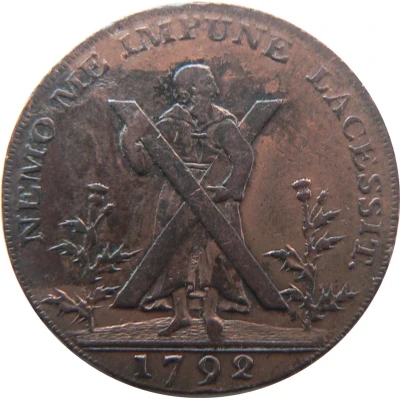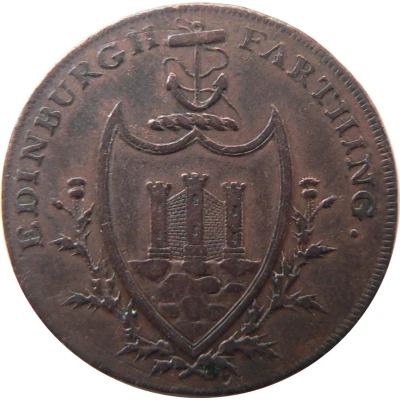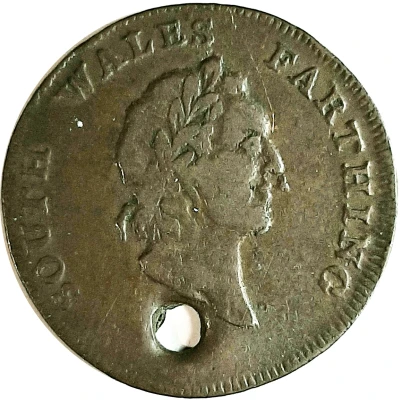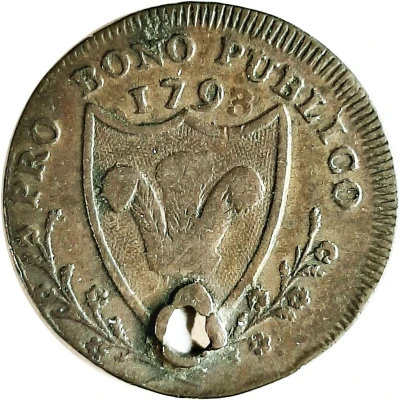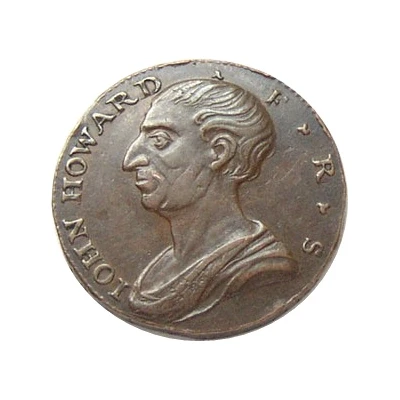
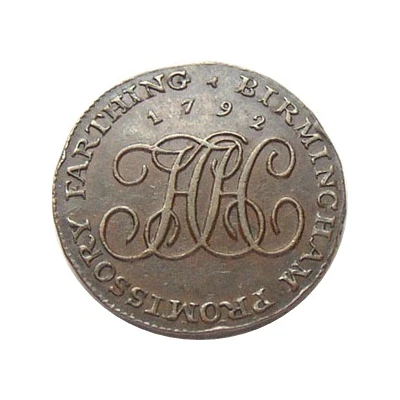

© ABC Coins & Tokens
1 Farthing Birmingham - John Howard
1792 year| Copper | 5.4 g | 21 mm |
| Issuer | United Kingdom (United Kingdom, British Overseas Territories and Crown Dependencies) |
|---|---|
| Type | Token |
| Year | 1792 |
| Value | 1 Farthing (1⁄960) |
| Currency | Conder tokens (1787-1797) |
| Composition | Copper |
| Weight | 5.4 g |
| Diameter | 21 mm |
| Shape | Round |
| Technique | Milled |
| Orientation | Coin alignment ↑↓ |
| Demonetized | 1797 |
| Updated | 2024-10-09 |
| Numista | N#81434 |
|---|---|
| Rarity index | 86% |
Reverse
Date above a central monogrammed HH cypher in ornamental script. Lettering around, beaded border
Script: Latin
Lettering:
PROMISSORY FARTHING · BIRMINGHAM
1792
H H
Translation: Henry Hickman
Edge
Plain with lettering
Lettering: H. HICKMANS WAREHOUSE BIRMINGHAM
Comment
Scarce Henry Hickman’s Birmingham (Warwickshire) copper Conder farthing token dated 1792.Issued by Henry Hickman, a wholesale and retail dealer in sheet, bar and rod iron - with a business at 3, Edgbaston Street, Birmingham.
Hickman is also recorded as a die-sinker and toolmaker in Wrightson’s triennial Birmingham directory, 1818. The token was probably manufactured by William Mainwaring who worked as a diesinker for William Lutwyche at the latter's works in Birmingham, but Hickman himself, given his profession, may have been involved in creating the dies. William Mainwaring died in 1794.
John Howard (a philanthropist, 2 September 1726 - 20 January 1790), in whose name this token was issued, was an expert in prisons and published the book "The State of the Prisons in England & Wales" in 1777. He was elected a Fellow of the Royal Society in May 1756. In 1758, Howard married Henrietta Leeds who died in 1765, a week after giving birth to a son, also named John. He was appointed High Sheriff of Bedfordshire in 1773, initially for a one-year period. His final journey took him into Eastern Europe, and into Crimea. Whilst at Kherson, in what is now Ukraine, Howard contracted typhus on a prison visit and died, aged sixty-three.
For a ten-year period extending from 1787-1797 almost the only “coins” in circulation in Britain were the Provincial, or “Conder” tokens. As they were designed and manufactured by the public, they were not limited by any rules or regulations. Taken as a group, the tokens form a history of a people in a way never seen before - or since. Through them, we can look in on life in late 18th century Britain. We can see how they lived and thought through their commerce, politics, advertising, and even view their architecture. Avidly collected at the time of their issue, many of these tokens survive in wonderful condition, pieces of history that can be held in the hand. Collectors today find them perhaps even more fascinating than they did years ago. The study of these tokens has proven to be rewarding to many, and the stories behind the tokens and the era are exciting to discover.
Interesting fact
One interesting fact about the Token 1 Farthing (Birmingham - John Howard) 1792 from United Kingdom is that it was issued during a time of severe coinage shortages in the country. The British government was unable to produce enough coins to meet the demands of the growing economy, leading to a shortage of small denomination coins like the farthing. To address this issue, private companies and individuals, such as John Howard, were allowed to produce their own tokens, which were accepted as legal tender. This coin is a rare example of a privately minted token that was issued during this time period.
